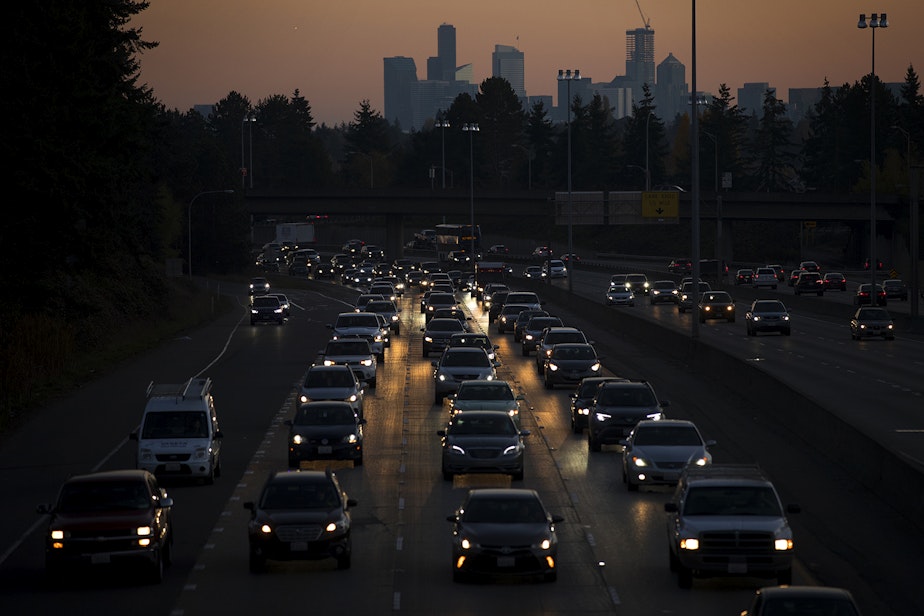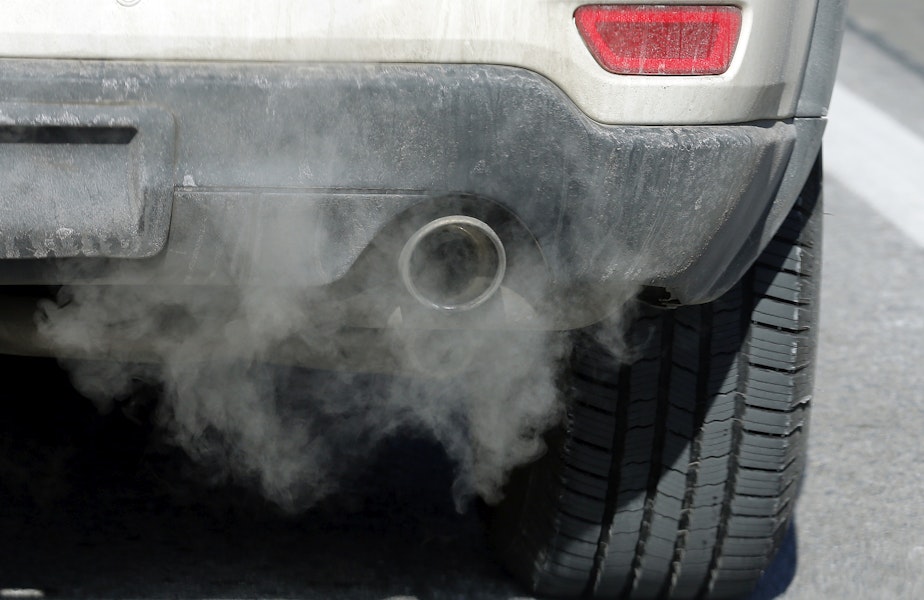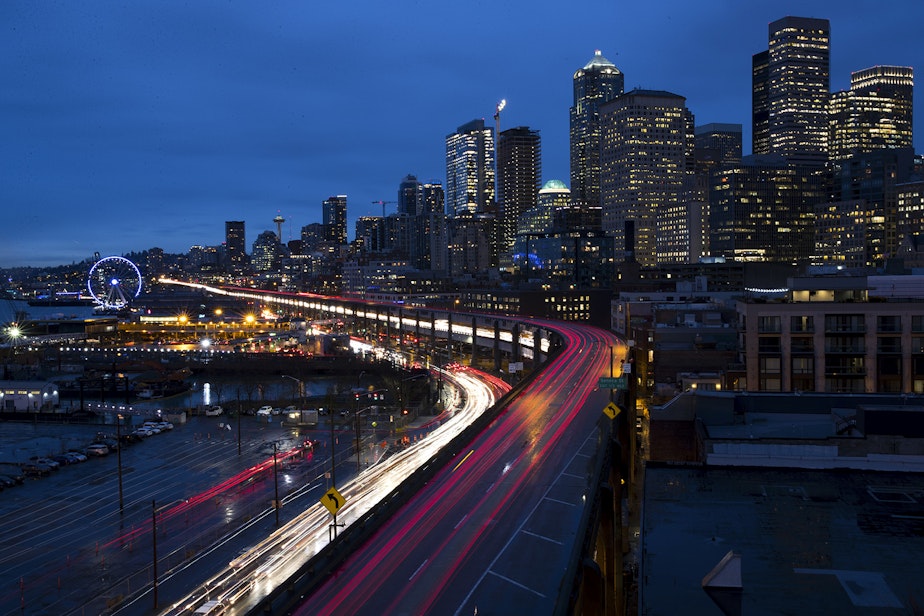Rush-hour traffic in Seattle increases blood pressure, but not for the reason you think

It will come as no surprise to anyone who braves I-5 on a weekday at either 8 a.m. or 5 p.m. (or practically anytime in between) that your blood pressure tends to increase during sudden slowdowns and bumper-to-bumper backups.
But a new study suggests that it’s not just the Tesla changing lanes without using a directional that is causing your heart to pound. Ultrafine particles circulating on and near congested freeways — a toxic mixture of exhaust from tailpipes, brake and tire wear, and road dust — increases blood pressure, which could lead to other health problems.
“We are beginning to believe that it's these really tiny particles that are responsible for health effects,” explained lead researcher Joel Kaufman, a University of Washington physician and professor of environmental and occupational health sciences. “It's not just being in a car, it's the people who live near roadways that have the same exposures.”
Kaufman and his team drove healthy young people between the ages of 22 and 45 through rush-hour traffic in Seattle while monitoring their blood pressure. On some of the drives, unfiltered air was allowed to enter the car. On other drives, the car was equipped with a high-quality HEPA air filter, which blocked 86% of particulate pollution.
The study used “sham filters” in some drives and real filters in others, so study participants and their drivers didn’t know whether the air was filtered or not.
Researchers found that breathing unfiltered air in the car caused blood pressure increases of 4.5 millimeters of mercury compared to passengers riding in the car with filtered air.

The effect is equivalent to someone eating a high-sodium diet, and the increased blood pressure lasted for at least 24 hours after the rush-hour drive in a car with unfiltered air.
A blood-pressure increase of five points might not sound like much, but Kaufman said the impact should be weighed in terms of the number of people affected, potentially people who already have high blood pressure or other health issues.
“We know that modest increases in blood pressure like this, on a population level, are associated with a significant increase in cardiovascular disease,” Kaufman said. “There is a growing understanding that air pollution contributes to heart problems. The idea that roadway air pollution at relatively low levels can affect blood pressure this much is an important piece of the puzzle we’re trying to solve.”
A previous experiment by Kaufman’s lab found that exposure to diesel exhaust fumes increased blood pressure in a controlled environment. This new study, published Tuesday in the Annals of Internal Medicine, was designed to test that earlier finding in a real-world setting by isolating the effects of traffic-related air pollution.
The research was funded by the U.S. Environmental Protection Agency and the National Institutes of Health.

Kaufman, who has worked at the University of Washington since 1997, said the number of ultrafine particles inside unfiltered cars was striking — tens of thousands of particles per cubic centimeter. Those numbers were reduced dramatically by high-quality filtration.
The findings add to growing concerns among public health experts about ultrafine particles, which are less than 100 nanometers in diameter and much too small to be seen. The microscopic particles are unregulated and may pose health risks, even at low levels.
Michael Young, a former postdoctoral fellow in the University of Washington's Department of Environmental and Occupational Health Sciences and lead author of the new study, said the study's design overcame common obstacles to effectively measuring the impact of traffic-related air pollution.
"Studies on this topic often have a challenging time separating the effects of pollution from other roadway exposures like stress and noise, but with our approach, the only difference between drive days was air pollution concentration,” Young said in a press release. “The findings are valuable because they can reproduce situations that millions of people actually experience every day.”
Kaufman said the findings have reinforced his own tendencies when he finds himself driving in heavy traffic in and around Seattle.
“When I drive, I keep my windows up and my car on recirculate,” he said.
Although Kaufman already has a high-quality air filter in his car, he said he'd like to see automakers and after-market filter manufacturers make better filters readily available.
"Even better would be reducing the number of cars on the road burning fossil fuels like gasoline or diesel, and making clean and convenient transportation readily available for people who need to commute long distances," he said.
EDITOR'S NOTE: The ending of this story has been amended to more accurately convey Kaufman's opinion about in-car air filters and the filter he uses in his own vehicle.


